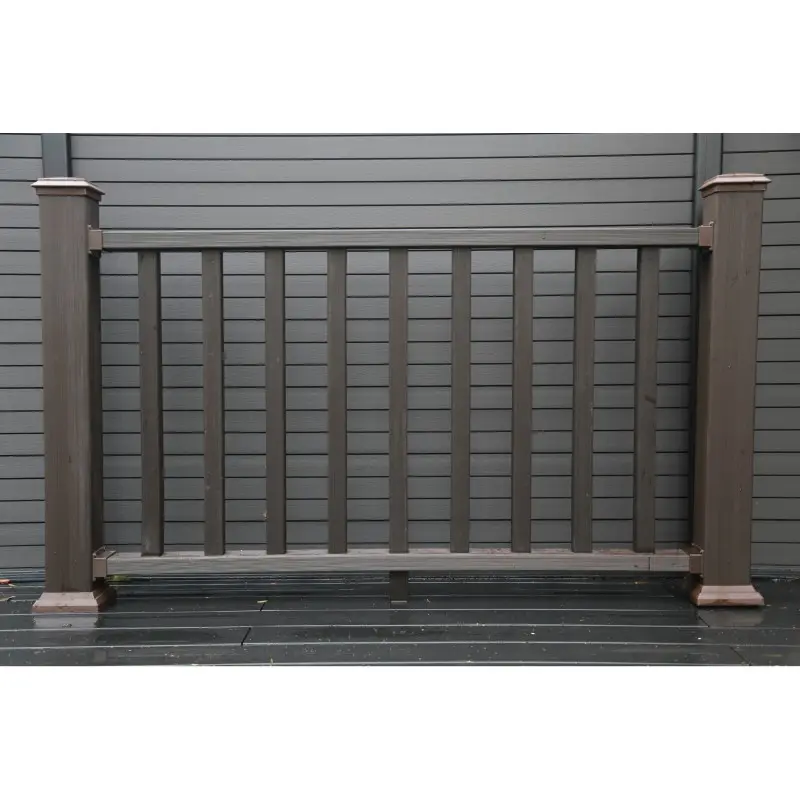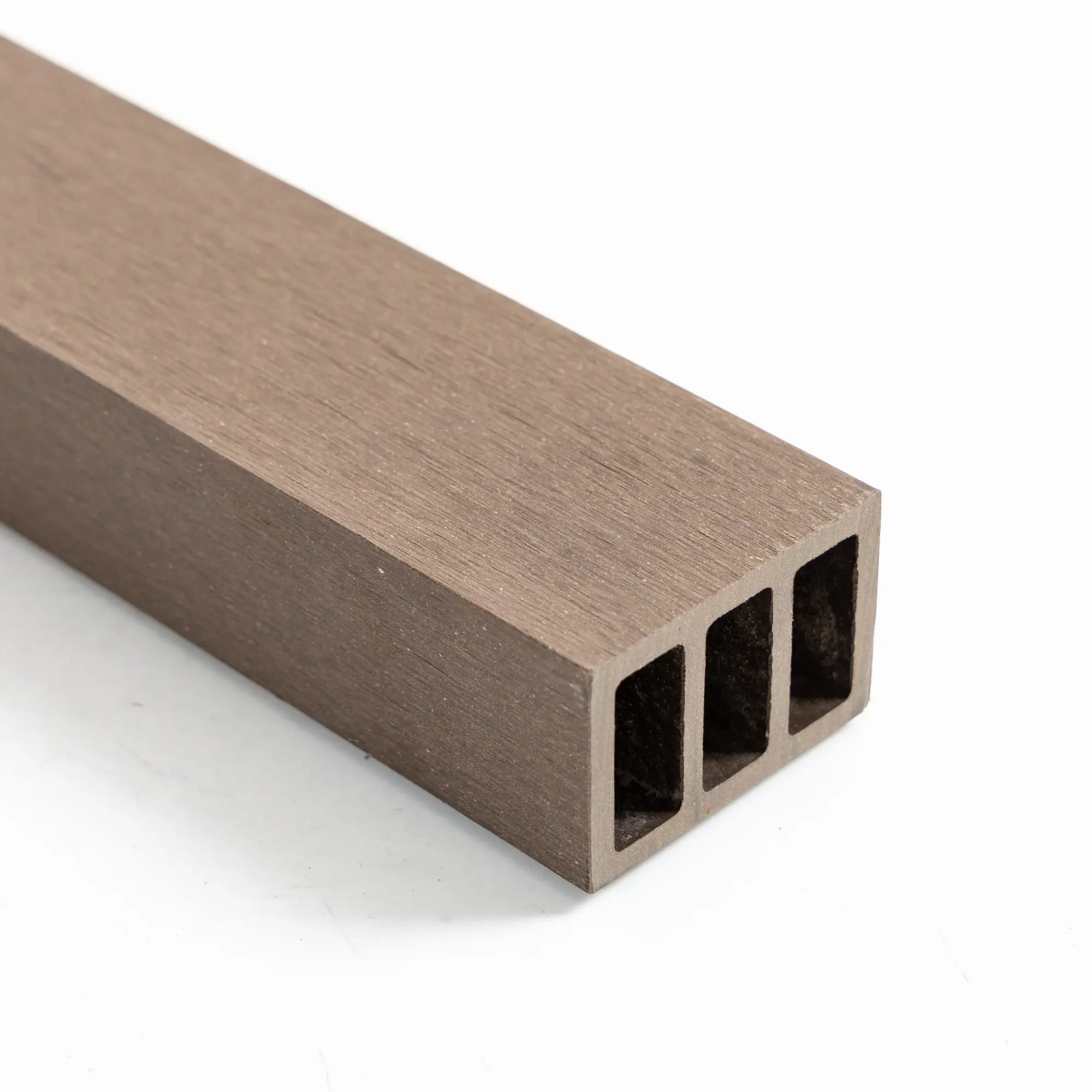Safety professionals and property managers understand that proper guardrail installation is fundamental to creating secure environments across residential, commercial, and industrial facilities. Modern guardrails serve as critical barriers that prevent falls, guide traffic flow, and ensure regulatory compliance while maintaining aesthetic appeal. The installation process requires careful planning, adherence to building codes, and selection of appropriate materials to achieve maximum safety effectiveness.
Professional installation teams recognize that guardrails must withstand significant force loads while providing reliable protection for years. The integration of advanced materials like composite systems has revolutionized traditional installation methods, offering enhanced durability and reduced maintenance requirements. Understanding proper installation techniques ensures that safety barriers perform optimally under various environmental conditions and usage patterns.
Understanding Guardrail Safety Standards and Regulations
Building Code Requirements for Guardrail Installation
Building codes establish minimum height requirements for guardrails, typically mandating 42-inch heights for commercial applications and 36-inch heights for residential settings. These regulations specify load requirements that guardrails must withstand, including concentrated loads of 200 pounds applied at any point along the top rail. Professional installers must verify local code variations, as some jurisdictions impose additional requirements for specific building types or occupancy classifications.
Structural engineers evaluate existing building conditions to ensure adequate support for guardrail attachment points. The connection method between guardrails and supporting structures must transfer loads effectively without compromising the integrity of either component. Proper documentation during installation demonstrates compliance with applicable codes and provides valuable records for future inspections or modifications.
Safety Factor Considerations in Professional Installation
Installation professionals apply safety factors that exceed minimum code requirements to account for dynamic loading conditions and material degradation over time. Advanced guardrail systems incorporate engineered connections that distribute loads across multiple attachment points, reducing stress concentrations that could lead to failure. The selection of appropriate fasteners and hardware ensures long-term performance under various environmental exposures.
Quality assurance protocols during installation include torque specifications for all connections and verification of proper alignment throughout the system. Professional teams conduct load testing on representative sections to validate installation methods and confirm that safety factors meet or exceed design requirements. These practices establish confidence in the installed system's ability to provide reliable protection throughout its service life.
Pre-Installation Planning and Site Assessment
Structural Evaluation and Load Path Analysis
Comprehensive site assessment begins with evaluation of existing structural conditions and identification of suitable attachment points for guardrail systems. Structural engineers analyze load paths to ensure that guardrail forces can be effectively transferred to the building's primary structural elements. This analysis considers both vertical and horizontal loads that guardrails may experience during normal use and emergency conditions.
Professional assessment includes evaluation of substrate materials, existing reinforcement, and potential interference with building systems. The condition of concrete, steel, or wood substrates affects the selection of appropriate anchoring methods and may require remediation before installation proceeds. Detailed documentation of existing conditions provides the foundation for developing installation procedures that ensure optimal performance.
Material Selection and System Compatibility
Modern guardrails utilize advanced composite materials that offer superior performance characteristics compared to traditional alternatives. Co-extruded composite systems provide excellent weather resistance, dimensional stability, and aesthetic versatility while maintaining structural integrity under demanding conditions. The selection process considers environmental factors, maintenance requirements, and long-term performance expectations.
Compatibility between different system components ensures seamless integration and optimal performance throughout the installation. Professional installers verify that posts, rails, infill panels, and connection hardware work together effectively to create a cohesive safety barrier. Material specifications must account for thermal expansion, moisture exposure, and ultraviolet radiation effects that could affect long-term performance.

Installation Procedures and Best Practices
Foundation Preparation and Anchoring Methods
Proper foundation preparation establishes the basis for reliable guardrail performance throughout the system's service life. Installation teams use precision drilling equipment to create anchor holes that meet exact dimensional requirements and ensure optimal load transfer. The selection of appropriate anchoring systems depends on substrate conditions, load requirements, and environmental considerations.
Mechanical anchors, chemical anchors, and embedded plates each offer specific advantages for different installation conditions. Professional teams evaluate factors such as edge distances, spacing requirements, and installation tolerances to select the most appropriate anchoring method. Quality control procedures include pull-out testing and torque verification to confirm that anchors meet design requirements before proceeding with guardrail installation.
Assembly Techniques and Alignment Procedures
Systematic assembly procedures ensure that guardrails maintain proper alignment and meet dimensional requirements throughout the installation process. Professional teams use precision measuring equipment and temporary supports to maintain accurate positioning during assembly. The sequence of installation operations affects the final quality and requires careful coordination to avoid conflicts or rework.
Connection details between adjacent sections require special attention to maintain structural continuity and aesthetic appearance. Professional installers use specialized tools and techniques to achieve precise alignment while ensuring that all connections meet torque specifications. Quality control checks at each stage of assembly prevent accumulation of errors that could compromise the final installation quality.
Quality Control and Performance Validation
Installation Inspection and Testing Protocols
Comprehensive inspection procedures verify that installed guardrails meet all applicable standards and perform as intended under design conditions. Visual inspection identifies potential issues such as improper alignment, inadequate connections, or material defects that could affect safety performance. Professional teams use standardized checklists to ensure systematic evaluation of all critical installation elements.
Performance testing validates that installed systems can withstand specified loads without failure or excessive deflection. Load testing procedures apply forces that simulate actual use conditions while monitoring system response and identifying any areas of concern. Documentation of test results provides verification that installations meet safety requirements and perform reliably under normal operating conditions.
Long-Term Maintenance and Performance Monitoring
Effective maintenance programs preserve guardrail performance and extend service life while maintaining safety effectiveness. Regular inspection schedules identify potential issues before they compromise system integrity, allowing for proactive maintenance that prevents costly repairs or replacements. Professional maintenance teams understand the specific requirements of different guardrail materials and systems.
Performance monitoring systems track guardrail condition over time and provide data for optimizing maintenance schedules and procedures. Advanced composite materials require minimal maintenance compared to traditional alternatives, but periodic inspection ensures continued effectiveness. Proper documentation of maintenance activities supports warranty compliance and demonstrates ongoing commitment to safety excellence.
Environmental Considerations and Sustainability
Weather Resistance and Durability Factors
Environmental conditions significantly impact guardrail performance and longevity, requiring careful consideration during material selection and installation planning. Composite guardrail systems offer superior resistance to moisture, temperature fluctuations, and ultraviolet radiation compared to traditional materials. These characteristics translate to reduced maintenance requirements and extended service life in challenging outdoor environments.
Installation techniques must account for thermal expansion and contraction that occurs with temperature changes throughout the year. Proper joint design and connection details accommodate movement while maintaining structural integrity and safety performance. Professional installers understand how environmental factors affect different materials and adjust installation procedures accordingly to ensure optimal long-term performance.
Sustainable Materials and End-of-Life Considerations
Modern guardrail systems increasingly incorporate sustainable materials and manufacturing processes that reduce environmental impact while maintaining superior performance characteristics. Composite materials often include recycled content and can be recycled at the end of their service life, supporting circular economy principles. The extended service life of advanced materials reduces replacement frequency and associated environmental impacts.
Life cycle assessment considers the total environmental impact of guardrail systems from manufacturing through disposal or recycling. Professional specifiers evaluate these factors alongside performance requirements to select systems that optimize both safety effectiveness and environmental responsibility. Sustainable installation practices minimize waste generation and support broader organizational sustainability goals.
Cost Optimization and Value Engineering
Initial Investment vs Long-Term Value Analysis
Professional evaluation of guardrail options considers total cost of ownership rather than simply initial purchase price to identify solutions that provide optimal long-term value. Advanced composite systems may require higher initial investment but offer significant savings through reduced maintenance requirements and extended service life. This analysis helps decision-makers understand the true economic benefits of different guardrail options.
Installation efficiency affects overall project costs and schedule requirements, making proper planning essential for cost optimization. Professional installation teams use proven procedures and specialized equipment to minimize labor time while ensuring quality results. The selection of appropriate systems and installation methods can significantly impact both initial costs and long-term performance expectations.
Risk Management and Liability Considerations
Proper guardrail installation reduces liability exposure by providing reliable protection and demonstrating commitment to safety excellence. Professional installation and documentation support legal protection while ensuring that safety systems perform as intended under various conditions. The selection of appropriate materials and installation methods affects both performance and risk management considerations.
Insurance implications of guardrail systems depend on installation quality, material selection, and ongoing maintenance practices. Professional installation and comprehensive documentation support favorable insurance considerations while providing evidence of due diligence in safety management. These factors contribute to overall risk management strategies and demonstrate organizational commitment to safety excellence.
FAQ
What are the minimum height requirements for guardrails in commercial applications
Commercial guardrails typically require a minimum height of 42 inches as specified by most building codes, though specific requirements may vary by jurisdiction and building type. Professional installers must verify local code requirements and consider any additional safety factors that may be appropriate for specific applications. Some specialized environments may require greater heights based on risk assessment and safety engineering analysis.
How do composite guardrail systems compare to traditional materials in terms of maintenance
Composite guardrail systems require significantly less maintenance than traditional wood or metal alternatives due to their superior weather resistance and dimensional stability. Unlike wood systems that require regular painting or staining, composite materials maintain their appearance and performance with minimal intervention. Metal systems may require periodic coating renewal to prevent corrosion, while composite systems resist moisture and chemical exposure without protective coatings.
What load requirements must guardrails meet for safety compliance
Standard guardrails must withstand a concentrated load of 200 pounds applied at any point along the top rail, plus uniform loads distributed across the entire system. Professional installation ensures that all connections and supports can transfer these loads effectively to the building structure without failure. Additional load requirements may apply for specific applications such as industrial facilities or areas with unusual exposure conditions.
How long do properly installed composite guardrail systems typically last
High-quality composite guardrail systems properly installed and maintained can provide 25-30 years or more of reliable service under normal conditions. The exact service life depends on environmental exposure, material quality, and maintenance practices throughout the system's operational period. Professional installation and appropriate material selection significantly influence long-term performance and durability expectations for guardrail systems.
Table of Contents
- Understanding Guardrail Safety Standards and Regulations
- Pre-Installation Planning and Site Assessment
- Installation Procedures and Best Practices
- Quality Control and Performance Validation
- Environmental Considerations and Sustainability
- Cost Optimization and Value Engineering
-
FAQ
- What are the minimum height requirements for guardrails in commercial applications
- How do composite guardrail systems compare to traditional materials in terms of maintenance
- What load requirements must guardrails meet for safety compliance
- How long do properly installed composite guardrail systems typically last

